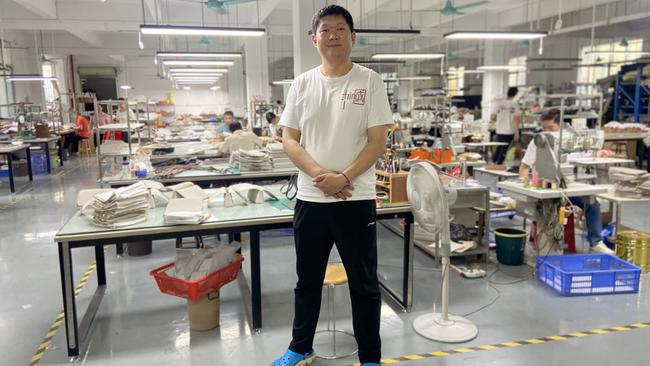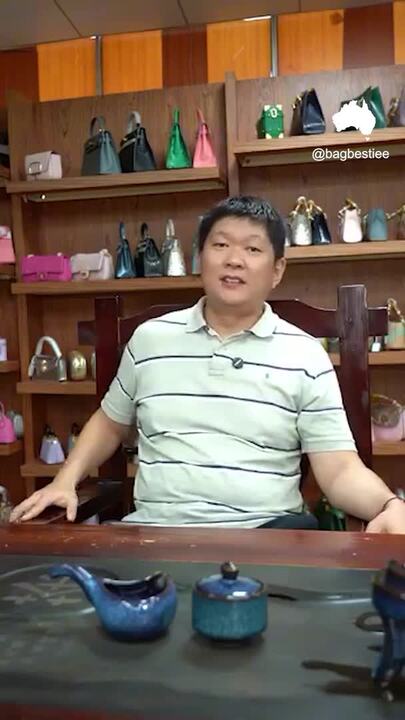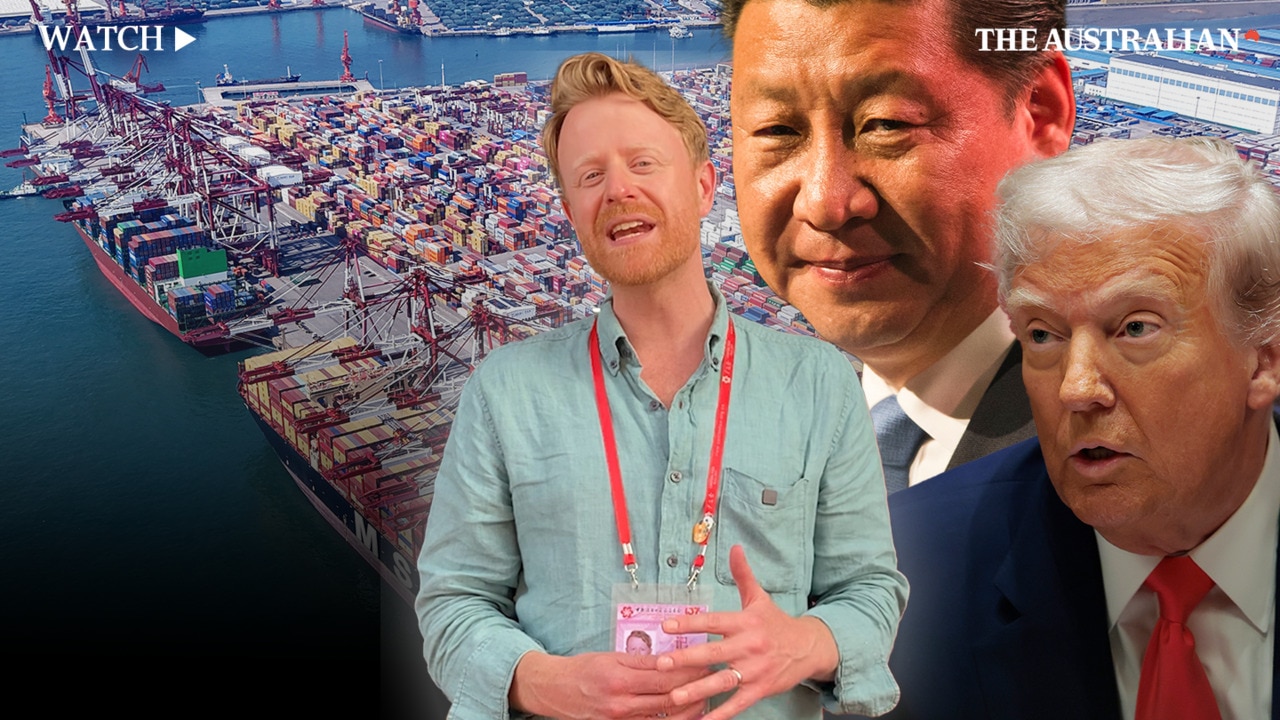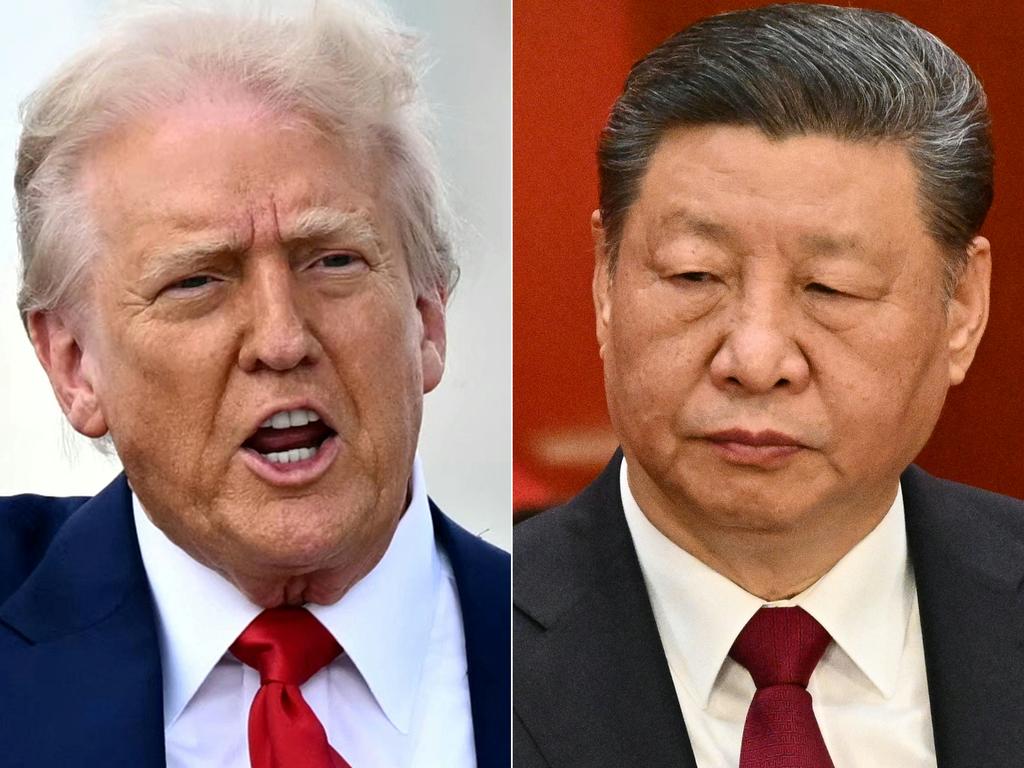Even China’s trade war winners worry about Trump’s next move
Chinese entrepreneur Wang Sen woke up on Monday to a strange development – overnight, he had joined the tiny group of people in China who are having a good trade war. But these rare winners are no fans of the economic turbulence.

Chinese entrepreneur Wang Sen woke up on Monday to a strange development — overnight, he had joined the tiny group of people in China who are having a good trade war.
A video he had made a month earlier in his leather handbag factory in Guangzhou, in China’s south, had gone viral on TikTok. It zoomed around the internet as TikTok’s algorithm promoted short videos mixing anger and disbelief about Donald Trump’s tariff regime and tips for American consumers to get around them.
Other similar videos shot in Chinese factories started trending on the social media site, which is run from Beijing by its parent company ByteDance. Some believed Beijing’s hand was behind what one analyst described as a “calculated attempt to undermine President Trump’s tariff policy on China”.

Over green tea in his office at his factory, Mr Wang — wearing a “China” branded white T-shirt — explains that he was just trying to use his language skills to drum up business. “I wanted to attract customers from abroad,” he tells The Australian.
Born in Anhui province, he had worked as an English interpreter, and after that in the car industry, before taking over the high-end leather bag factory. Mr Wang’s short videos mix a celebration of the skill of Chinese craftsmanship with digs at marquee luxury brands who he accuses of downplaying their reliance on production in China.
Recently, he has also thrown in jabs at the American president. “This is actually a kind of tactic. At the very start of a video, you throw out a controversial question, so then people will argue with you, and then more people will see your videos.”
The formula is working. On Sunday night, Mr Wang went to bed with 50,000 TikTok followers. By Monday, he had half a million. “The team was so overwhelmed. So happy, so excited,” he tells The Australian.
Orders for leather bags were flooding in from around the world. Most were for bags shaped in classic designs, although without the famous luxury logos, and were priced between US$1000 and $US2000 ($1570-$3130). His pitch is that customers can get a tailored product made with high end materials for a fraction of the price of big name brands. “We used to make bags for those brands, but I can’t say their names,” he says.

He is now looking at hiring more staff to meet the new demand, a rare occurrence in China right now. Much more common are stories of businesses having to send workers on extended leave after a tit-for-tat escalation between President Trump and President Xi Jinping left tariffs on most Chinese goods at a crippling 145 per cent.
Mr Trump on Thursday said Mr Xi had “reached out” through his officials, although it was not clear who those underlings were or what the nature of the discussions involved. “If you knew (Xi),” Mr Trump told reporters, “you would know that if they reached out, he knew exactly. He knew everything about it.”
The President also said he was confident Beijing would ultimately agree to TikTok’s US assets being sold to American buyers in a process being overseen by the White House. “TikTok is good for China,” Mr Trump said.
He added that he didn’t want to raise tariffs higher. “I may want to go to less because, you know, you want people to buy.”
The American president had earlier urged Mr Xi to tap out and negotiate, telling him this week “the ball is in China’s court”. China’s leader has responded by lifting tariffs on American imports to 125 per cent and by threatening to cut supplies of Chinese dominated heavy rare earths to America.
Every day seems to bring new moves and counter moves from the two self-styled strongmen. Mr Xi has ordered the cancelling of tens of billions of dollars worth of Chinese orders of planes from American giant Boeing and halted all imports of LNG from America.
Mr Trump has countered with the sudden restriction on sales to China of chips made by American giant Nvidia that have been pivotal to China’s AI industry and the sanctioning of a Chinese company that had imported oil from Iran in defiance of US restrictions.
Even Mr Wang, a rare winner from the early stage of the trade war, says he is no fan of the economic turbulence, which compounds a historic property slump and China’s already fragile consumer confidence. “The economy is going slower, and people’s income is getting lower,” he says. “We are trying to save money because we realise making money is getting harder.”
The fractured age
This week The Australian has been in Guangzhou, speaking to Chinese manufacturers and exporters at the Canton Fair, China’s biggest trade show. The Fair’s more than 30,000 exhibitors, and 200,000-odd foreign buyers, are living the messy reality of Mr Trump’s trade war.

One of the most striking changes is who has turned up. Buyers from the Middle East, especially the United Arab Emirates and Saudi Arabia, are here in record numbers, as are those from Indonesia, Malaysia, Nigeria and India. An extraordinary 20,000 buyers are from Bangladesh alone, according to an online Chinese trade publication.
Meanwhile, attendance by American and European buyers has halved from last year’s show, falling to a combined 20,000. “There’s a very obvious decrease,” one regular at the trade show told The Australian.
Their shrunken numbers are a manifestation of what Capital Economics group chief Neil Shearing has dubbed “the fractured age”, as the world increasingly moves towards two economic blocks: one centred around China, another around America. (Although as Australian iron ore miners would point out, the division is not so neat.)
Their reduction is not just about Mr Trump. China’s support of Russia’s invasion of Ukraine has turned off many Europeans. Beijing’s ominous threats towards Taiwan have also spooked many. Chinese manufacturing overcapacity has caused angst in Brussels and in Washington.
Some Chinese exhibitors grumble that many of the new clients are tougher negotiators than their rich world counterparts. “Most of the Indian clients, they want such low prices,” laments one vendor of telco and internet hardware.
Deep distrust between Beijing and the wealthy democratic world means many of the most cutting edge products on display are unlikely to be rolling along the streets of Sydney, Vancouver or Copenhagen anytime soon.
Take the “Rotunbot”, which its creator describes as an “autonomous patrol robot for surveillance and strike”. Made in Hangzhou, home of many of China’s most innovative firms, it looks like a cross between Robocop and a giant beach ball. “The robot can withstand up to 4 tons of impact force,” says a promotional video showing the ominous spherical tyre in action. It can also shoot out a net, which it uses to catch young men wielding baseball bats in the promo video.
They sell for $US10,000. A Rotunbot salesman says Chinese police departments have been supportive buyers. Beijing’s Daxing Airport also has bought them to buff up its security. In addition to China’s security state, Middle Eastern buyers have been interested.
While the orders for some contentious models may not be coming in from America, Europe or Australia, there is a noticeable swagger in the robot wing of this year’s Canton Fair. They are part of the “new productive forces” Mr Xi wants more of in the Chinese economy.
To judge by this week’s crowds, they will be increasingly shipped around the world, especially to Belt and Road countries. Among the robotic species on display were robotic lawn mowers (with “AI lawn recognition for safe, efficient mowing”), barista robots, glove controlled robot hands (for “precision motion excellence”), robots that sweep, mop and vacuum, and at least three makers of robodogs (an increasingly popular breed in China).
Drones, an industry in which China has become a world leader much to Washington’s discomfort, were also well represented. There was also i-Kingtec’s “Lotus” hub, which sells for $US100,000, and allows drones to operate, recharge, and stay safe in bad weather, all independent of human operators.
Made in Jiangsu province, they currently monitor traffic, inspect utilities, and monitor tourist sites in China. As of last year, they operate in Dubai as well as sites across China. “The Middle East, they are very easy to trade with,” one company representative tells The Australian.
She laughs when asked if the company is worried about American rivals emerging from behind Mr Trump’s tariff wall. The company has pioneered technology which can recharge a drone in 52 seconds, she explains. It manufactures its own products, it has its own test centres. “And our government gives us a lot of help,” she adds.
In her view, no country can outcompete China in her industry.
Serve the people
The high-tech sector is a rare pocket in China’s economy that has benefitted from tension with America. Beijing has signed off on exorbitant incentive packages to encourage its domestic industry to catch up to and, in more and more areas, surpass America.
But for all the political patronage, and all the crowds at the Canton Fair, the sector only employs a tiny fraction of China’s workforce. Only 16.7 million, or around 2 per cent, of China’s workforce of 740 million-odd people are employed in software, internet services, information and communication, according to the latest edition of a twice-a-decade economic census released by Beijing.

Manufacturing accounts for around 123 million people, or 16 per cent, of the country’s total. But even with China’s record surplus of goods trade to the world last year — a staggering $US1 trillion worth — the number of people employed in manufacturing is shrinking. Rising labour costs and “China plus” strategies have seen businesses open new factories outside of the country, while automation has reduced the number of jobs that remain in many Chinese factories.
China is experiencing something like its own “China shock”, the phenomenon blamed by many, including Mr Trump, for the hollowing out of factory jobs in America and other rich countries. The outskirts of Guangzhou, far away from the cavernous Canton Fair venue, are dotted with empty factories. Many were used by the textile industry, which has been migrating to other parts of the developing world since Mr Trump’s first term.
Mr Wu runs a second hand sewing machine shop in this part of Guangzhou. He used to also provide maintenance services to his clients but he says that business has shrivelled up as factories have closed. “They simply abandon the machines,” he tells The Australian.
An estimated 10 million to 20 million jobs in China are reliant on trade with America, according to analysts at Goldman Sachs. Among them are the makers of the toasters, fans, vacuum cleaners, coffee machines, clothes steamers, air conditioners and seemingly every other conceivable consumer products that fill the households of Americans and the rest of the world and are currently being hawked at the Canton Fair.
Interviews suggest some of these products will find their way into America through various “grey channels” — Vietnam is a favourite — but Mr Trump’s 145 per cent tariff has imperilled much of it. Blue chip American customers won’t have anything to do with schemes evading US tariffs.
It’s not just consumer goods. Most Chinese manufacturers of equipment used by American firms to make their products had their US orders stop overnight. A Shandong manufacturer of craft brewing equipment displaying at the trade show said America was the company’s top customer until a fortnight ago. Now Canada is.
An employee at the firm does not share the optimism of some other Chinese exhibitors that Mr Trump will relent. Similar confusion hangs over industry after industry in which China and America have become enmeshed over the last three decades.
So much turns on Mr Trump. “We don’t know what he’s planning or plotting as his next step,” says Mr Wang, the TikTok-trending Chinese leather handbag factory owner.
Mr Wang says what really worries him is the trade war transforming into a shooting war. “If the situation keeps declining, keeps going to the dead end, then, somehow, someday, we will reach that step. I really dread it.”
For now though, he just wants to keep his new channel for selling his goods open. His burgeoning TikTok account was closed a few days after he posted a video that he says “spilled too much tea” about how luxury brands work in China. “I even mentioned their names. That was not very good,” he tells The Australian.
The account closure rocked his marketing team, but he believed they could repeat their success. Days later, after a few more viral videos, their new account has surged past 200,000 followers. He says he will be more careful now to protect this important channel and be more respectful of the luxury brands his products are inspired by.
“We don’t want to take revenge against anyone,” he tells The Australian. “I want to take good care of my employees, and I want to serve the people,” he says, quoting a Chinese political slogan from the 1950s.
Mr Trump’s decision to allow TikTok to keep operating in America in defiance of Congress is helping — although, as with so much coming out of Washington right now, it seems any day the world could wake up to find that too has changed overnight.







To join the conversation, please log in. Don't have an account? Register
Join the conversation, you are commenting as Logout